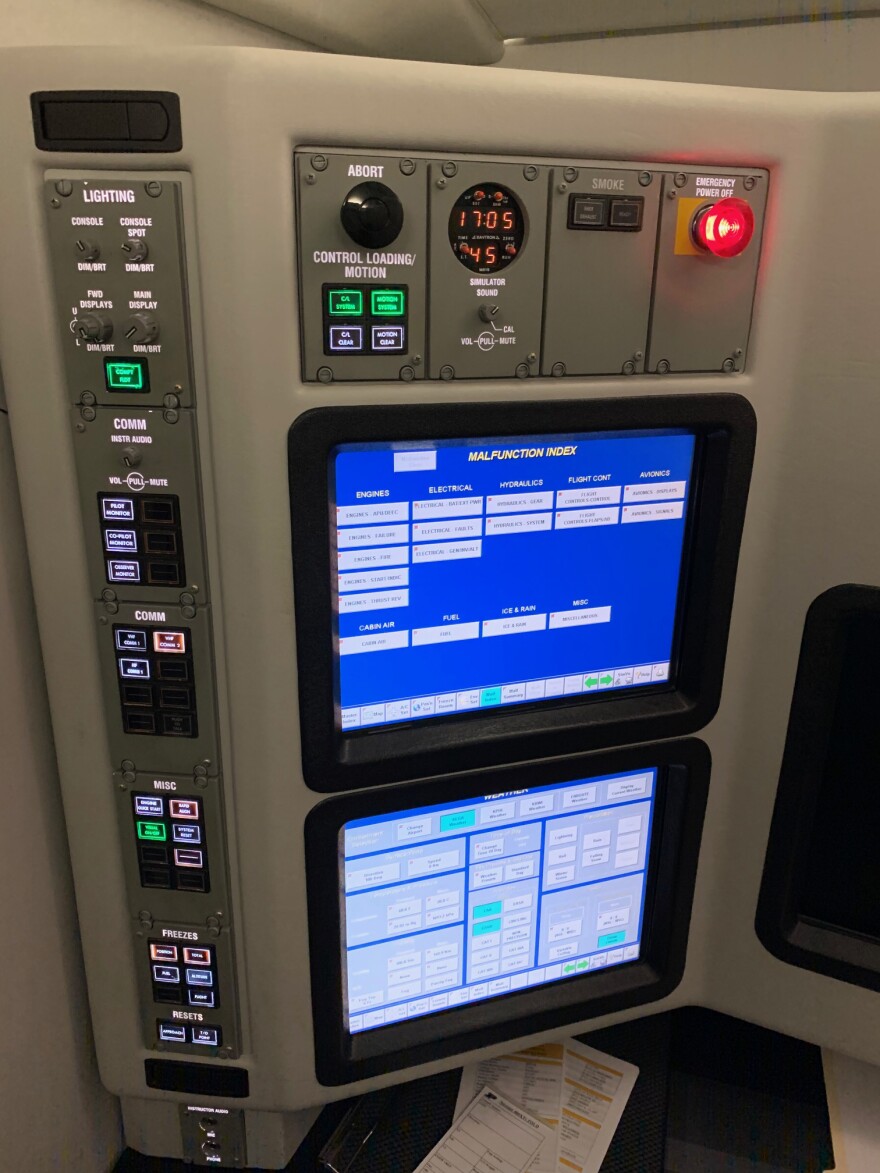PILOTS WANTED
Earlier this year, Boeing CEO Dennis Muilenberg told CNBC his company projects the aviation industry will need to find some 800,000 new pilots in the next 20 years. That's as retirements by current pilots are expected to escalate and new tech comes online for which additional training will be needed.
That could make it a seller’s market for those just coming out of flight school.
“The number of very experienced pilots that they’re going to be able to pull from to enter into the industry is going to be reduced for quite a while. So they gotta re-think what their entry-level propositions are going to be,” says Michael Wiggins, who chairs the Department of Aeronautical Science at Florida’s Embry-Riddle Aeronautical University.
A model for that could come from China.
“[Chinese airlines] get a commitment from the students and their parents that this person, upon graduation from the university and two years of flight training that we have paid for, they have to join our airline and become pilots,” says Fred Barez, who oversees the flight program at San Jose State University. He thinks there’s a simple way to prevent the loss of institutional knowledge when the current crop of pilots retires.
“Get more pilots to volunteer to come to the classroom and talk about experiences," he says. "This is one area that our students truly enjoy. When I had the guys from Horizon Air coming in, and Southwest coming in, I was trying to build relationships. And they came and talk to the students and students do not want to leave these guys alone!”

But that’s not the only part of the classroom experience that might change.
SIM CITY
Purdue University aviation professor Jason Cutter sits in the captain's chair of the school’s newest simulator. It pitches and tilts on giant mechanical legs, as on the inside, high-resolution video screens show the plane taking off from New York’s La Guardia Airport.
Purdue has several simulators inside a warehouse-style building next to its airport. There’s an exact replica of an Airbus A380 cockpit, and a Boeing 737 simulator is on the way soon. Both Boeing and Airbus declined comment for this story, but Cutter says schools will need to use tools like these to keep the next generation of pilots conversant with technology.
“The industry as a whole is still training pilots the way that we have for decades, even though the technology of the aircraft is continuing to advance," Cutter says. "So we’re flying the airplanes very differently, but we’re still stuck in the generation one, generation two training methodology, as we prepare them to fly generation four, generation five airplanes.”
Embry-Riddle’s Wiggins says it’s really about teaching flight thinking.

“But there’s more and more mental demands on pilots as to monitor and evaluate what the automation is doing," he says. "And so, like we try to say around here, ‘We’re not just training pilots, we’re training professional decision-makers who happen to know how to fly airplanes.’”
WHAT ROLE WILL COLLEGES PLAY?
There’s debate about the research component aviation schools will bear, though. San Jose State’s Barez says companies such as Boeing – which is overhauling software in its 737 Max jets after malfunctions led to two deadly crashes earlier this year – may have intellectual property concerns about, for instance, letting students test updates in a simulator to see how human pilots interact with onboard computers. Purdue’s Cutter seems to think it might be possible, though.
“We do have a pretty strong relationship with Boeing right now, and the relationship’s been building over the past several years," Cutter says. "So we are in talks about how we can do some research that’s going to not only benefit them, but the industry as a whole. So yes, that’s definitely on the agenda.”
But Embry-Riddle’s Wiggins says such testing would require exacting standards.
“You would have to look at it from an engineering standpoint, you’d have to look at it from an experienced pilot standpoint, and then the data would have to be analyzed by those that are very good at analyzing data objectively,” Wiggins says.
He says currently, his school gets updates on new tech through face-to-face conversations.
“Sometimes we will send faculty to go visit with airlines for a couple days to talk to the key players to update about certain things, and then that comes back in and rolls into the curriculum,” Wiggins says.
If flight schools want to land both sky-ready students who are choosing between top-flight aviation programs, as well as contracts with airlines and manufacturers, they’re going to need to keep adding tools -- both tech and people skills alike -- in the coming years. But first, the whole industry’s 30,000 foot view may need adjustments.



